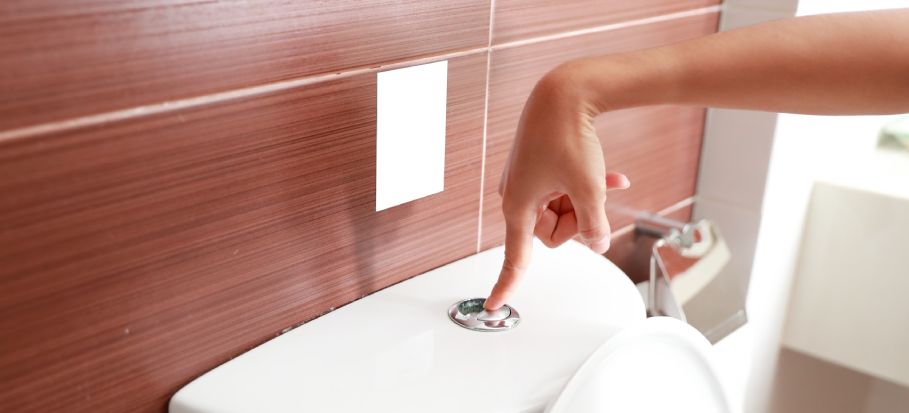How to Fix a Toilet That Won’t Flush

A toilet that won’t flush is usually caused by a blockage, a broken flush mechanism (handle, chain, flapper, or siphon), low cistern water level, or faulty fill/inlet valves. Start by identifying the cause, then try DIY fixes such as plunging, adjusting the chain, replacing worn parts, or adjusting the float. If the issue persists or involves leaks, call a licensed plumber.
Common Causes of a Toilet That Won’t Flush
Understanding the root cause is key. The main reasons include:
- Blockage in the toilet or u-bend – Caused by foreign objects, excessive toilet paper, or waste. Signs: slow drainage, gurgling sounds, partial flushes.
- Broken or loose flush handle, button, or chain – The flush lever may move freely but fail to lift the flapper.
- Damaged flapper, siphon, or flush valve – Cracked or worn flappers prevent water from leaving the cistern.
- Low cistern water level – Insufficient water reduces flushing power.
- Faulty fill valve or inlet valve – Prevents the cistern from refilling properly.
- Airlocks or water pressure issues – Can prevent proper drainage even when components are functional.
The key to fixing a toilet that won’t flush is to find the origin of the problem. Press on the flush handle or button and see If the washout is not happening. If that’s the case you might be dealing with a faulty mechanism or a broken toilet flush button. If the flush is happening by pressing the handle but the bowl contents are not washing out, there is a drainage issue
How to Fix a Toilet That Won’t Flush: Flush Mechanism
- The low water level in the tank. This is one of the main reasons for a non-functional flush. Make sure that the water level is a minimum of 3 centimetres beneath the overflow tube of the tank. Check how low the water level is and if the valve is off, please turn it on. Flush the toilet once the water level is optimum.
- Lift the chain, if there is one. Check it for excessive stretch. If there is, the flapper will not rise and won’t gather sufficient water in the bowl. Thus, there will not be a full flush. To fix this, remove the chain and re-hook it to the hole that is located near the flush lever.
- Wared or bent flapper. Inspect the rubber flapper – the part intended to control the flush mechanism. If no water pours into the bowl after pushing the handle, it’s because the flapper is not rightly seated. Simply re-seat the flapper and the tank should fill up. If the flapper is in bad condition, replace it. Turn off the tank while changing to a new one and flush again to check whether it’s working.
- Cleaning to unclog. Simple cleaning is also important if the flushing mechanism has stopped. You can use drain cleaner or muriatic acid, let it settle for a few minutes, use a brush and pour a gallon of hot water. If the water goes down, it means the flush is working again. And if it doesn’t, you may need the help of professional emergency plumbers.
How to Fix a Toilet Not Flushing Because of Drainage Issues
If the problem is not in the flush mechanism, but the drainage, here are the reasons for the damage and what you can do about it.- A clogged toilet can hinder the flush. Do not flush too much toilet paper because it can clog the pipe and flushing can become impossible, notes professional cleaning company Cleaning Day. You must use a toilet auger or a plunger to get rid of the waste and make flushing easy. If a toilet macerator is blocked, better call your trusted Saniflo engineer in London.
- Very weak flush. Excessively slow flushing is caused due to deposition of minerals and dirt which blocks the flow of water beneath the rim. You can remove the partial blockage by scrubbing with a wire brush and white vinegar below the rim. Check the flush system after cleaning.
- Incessant flushing. Constant flushing is a serious problem too as it leads to excessive water loss and higher water bills. In this case, you must ensure the float arm and the ball is working smoothly without any obstructions.
- Dysfunctional fill valve. Fill valve failure is another reason why the tank is not filling. If you don’t hear the sound of running water when pressing the handle, the ball cock is the one responsible. Don’t over-tighten the fill-valve nut while attaching to the tank or the tank might suddenly crack. If you do it yourself, chances are you might flood the premises, so you better call a blocked toilet plumber.
When to Call a Plumber
Professional intervention is required if:
- Persistent blockage despite plunging or snaking
- Water leaks from the base or cistern
- Cracks in cistern or pan
- Dual-flush system malfunctions or inaccessible parts
- Repeated partial flushes or weak water pressure
Most toilets that won’t flush can be fixed with simple diagnosis, adjustments, and replacement parts. Start with blockages, flush mechanisms, and water levels. Persistent problems or leaks require a licensed plumber.
Takeaways
- There are two main components of the toilet that could hinder its function – the flush mechanism and the drainage;
- Knowing how to do small fixes on either of them will ensure the longevity of your toilet bowl. For that you need to lift the tank lid and make sure the flapper, fill valve, chain and water pressure are working properly;
- Keeping your toilet bowl clean and being wary of the things you flush down the toilet is a key factor in keeping your toilet working order for a long time.
How to Fix a Toilet That Won’t Flush
Need help? Hire the London Property Service experts today by giving us a call on 020 3078 5920.




